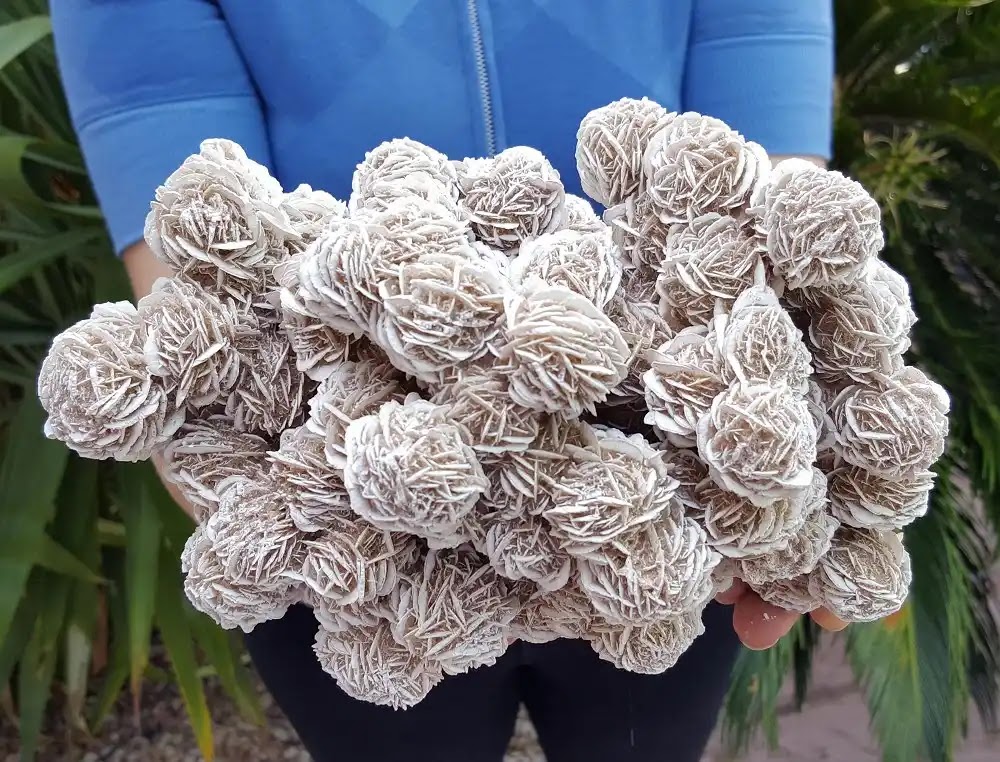Contents
Introduction:
In the vast expanse of the Sahara Desert lies a hidden gem of nature – the Sahara Desert Rose. Also known as “Desert Roses” or “Sand Roses,” these stunning formations captivate the imagination with their intricate patterns and breathtaking beauty. Formed through a harmonious blend of geological processes, these unique crystals hold both scientific and cultural significance, making them a symbol of the arid lands they call home. This article delves into the captivating world of the Sahara Desert Rose, shedding light on its formation, characteristics, and cultural significance.
Geological Formation:
Sahara Desert Roses are fascinating mineral formations that arise from a combination of arid conditions and specific geological processes. These roses are not actual plants but rather crystalline structures found in arid regions with abundant evaporitic minerals like gypsum or barite. The process typically begins with the presence of a salt-rich mineral deposit, often found in the lower layers of the desert’s soil.
As the desert experiences periods of heavy rain followed by intense evaporation due to the scorching sun, the water carrying mineral particles percolates through the sand, dissolving the minerals in its path. As the water reaches the surface and evaporates, the dissolved minerals start to crystallize and form intricate rosette-like shapes, leading to the birth of the Sahara Desert Rose.

Physical Characteristics:
Sahara Desert Roses showcase a mesmerizing symphony of colors and patterns that have lured travelers and scientists alike for centuries. The roses are usually small in size, ranging from a few centimeters to a few inches in diameter. Their structure comprises flattened, disc-shaped crystals, with thin, petal-like layers radiating outward from a central core.
The colors of the Desert Roses range from milky white to soft beige, occasionally displaying shades of pink, brown, or reddish hues. The intricate crystalline layers often resemble the delicate petals of a blooming rose, which earned them their poetic name.
Locations and Distribution:
The Sahara Desert, known as the world’s largest hot desert, spans across several North African countries, including Algeria, Chad, Egypt, Libya, Mali, Mauritania, Morocco, Niger, Sudan, and Tunisia. The Desert Roses are predominantly found in regions with gypsum or barite deposits, making the gypsum dunes of Algeria and the White Desert of Egypt famous hotspots for these formations.

Cultural Significance:
The Sahara Desert Rose holds deep cultural significance among the indigenous people of the desert regions. Ancient nomadic tribes considered these exquisite formations as gifts from the desert spirits, associating them with various myths and folklore. Some tribes believed that the roses were the remnants of fallen stars, while others thought they were fossils of mythical creatures.
In local traditions, the Desert Rose is considered a symbol of protection, prosperity, and longevity. It is often used as a talisman, believed to bring good fortune to those who possess it. Additionally, Desert Roses have been used as ornamental pieces and even in traditional medicine for their perceived healing properties.
Must Read=Peter Obi Net Worth | biography, height, waight, wife, childrens
Conservation and Preservation:
As with many natural wonders, Sahara Desert Roses face the threat of exploitation and illegal collection for commercial purposes. To protect these fragile formations and their ecosystems, governments and conservation organizations are taking measures to raise awareness about their significance and the need for preservation.
Educational initiatives, responsible tourism practices, and collaborations with local communities are essential steps in safeguarding these precious geological wonders for future generations.

FAQS
What is a Sahara Desert Rose?
The Sahara Desert Rose, also known as Desert Rose or Sand Rose, is a unique crystalline formation found in arid regions like the Sahara Desert. These formations are not actual plants but rather intricate structures formed from the crystallization of evaporitic minerals, such as gypsum or barite, in the desert’s soil.
How are Sahara Desert Roses formed?
Sahara Desert Roses are formed through a combination of arid conditions and specific geological processes. The process starts with the presence of salt-rich mineral deposits, often found in the lower layers of the desert’s soil. When the region experiences heavy rainfall followed by intense evaporation due to the scorching sun, the water carrying dissolved mineral particles moves through the sand. As the water reaches the surface and evaporates, the minerals start to crystallize, forming the distinctive rosette-like shapes of the Desert Roses.
Where can Sahara Desert Roses be found?
Sahara Desert Roses are predominantly found in regions with gypsum or barite deposits, which are common in the Sahara Desert. Countries in North Africa, such as Algeria, Chad, Egypt, Libya, Mali, Mauritania, Morocco, Niger, Sudan, and Tunisia, are known to have these formations. Hotspots for Desert Roses include the gypsum dunes of Algeria and the White Desert of Egypt.
What are the physical characteristics of Sahara Desert Roses?
Sahara Desert Roses are typically small in size, ranging from a few centimeters to a few inches in diameter. They consist of flattened, disc-shaped crystals with thin, petal-like layers radiating outward from a central core. The colors of Desert Roses vary from milky white to soft beige, and sometimes exhibit shades of pink, brown, or reddish hues.
What is the cultural significance of Sahara Desert Roses?
Among the indigenous people of desert regions, Sahara Desert Roses hold deep cultural significance. Ancient nomadic tribes considered these formations as gifts from desert spirits, attributing various myths and folklore to them. Desert Roses have been associated with fallen stars, fossils of mythical creatures, and considered symbols of protection, prosperity, and longevity. They are often used as talismans and ornamental pieces, and have also been utilized in traditional medicine for their perceived healing properties.
Conclusion:
The Sahara Desert Rose stands as a testament to the astonishing beauty and resilience of nature, forged through millennia of geological processes in one of the most challenging environments on Earth. As we continue to uncover the secrets of these mesmerizing formations, let us also embrace our responsibility to protect and preserve them, ensuring that the Sahara Desert Rose continues to captivate and inspire generations to come.




